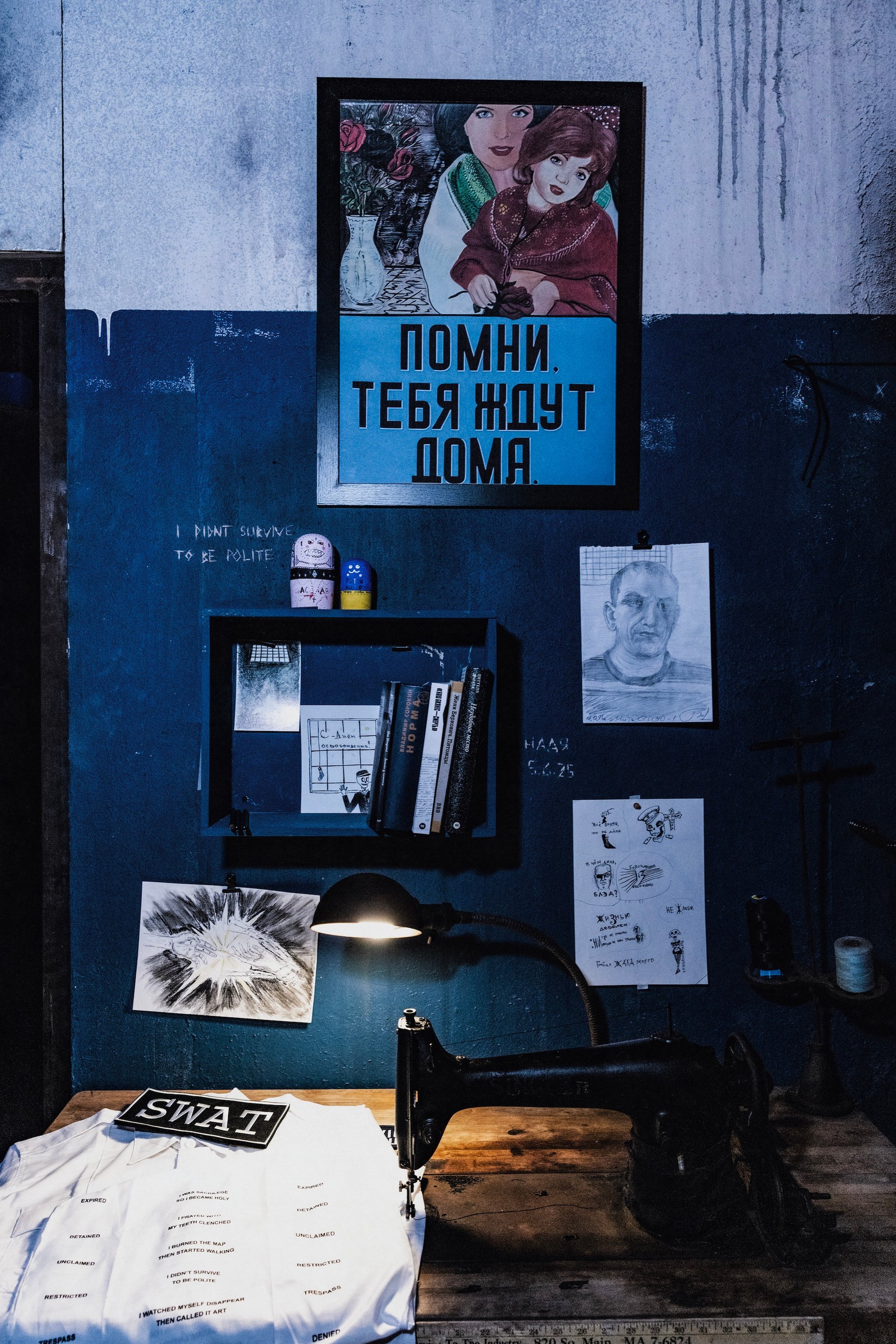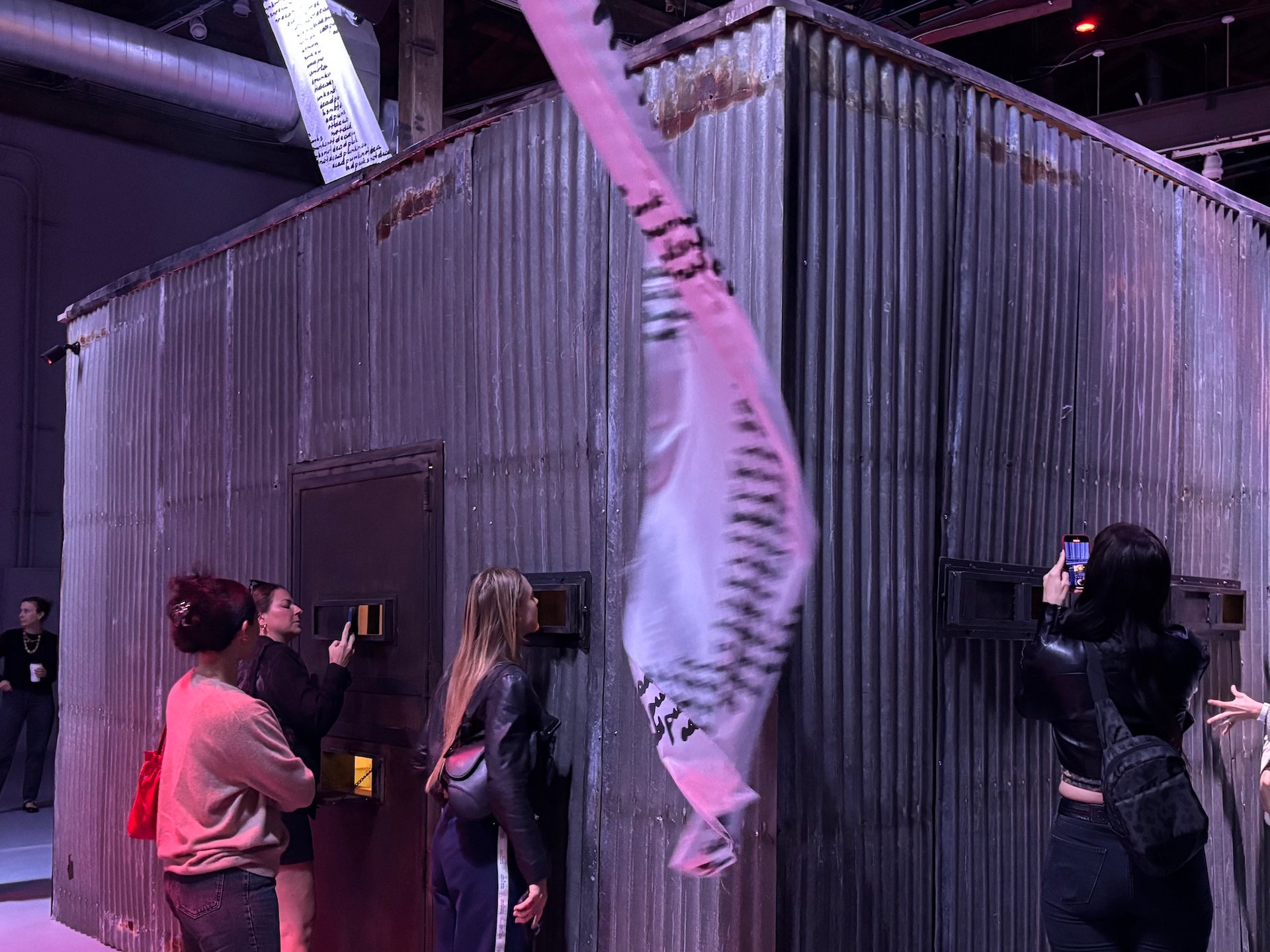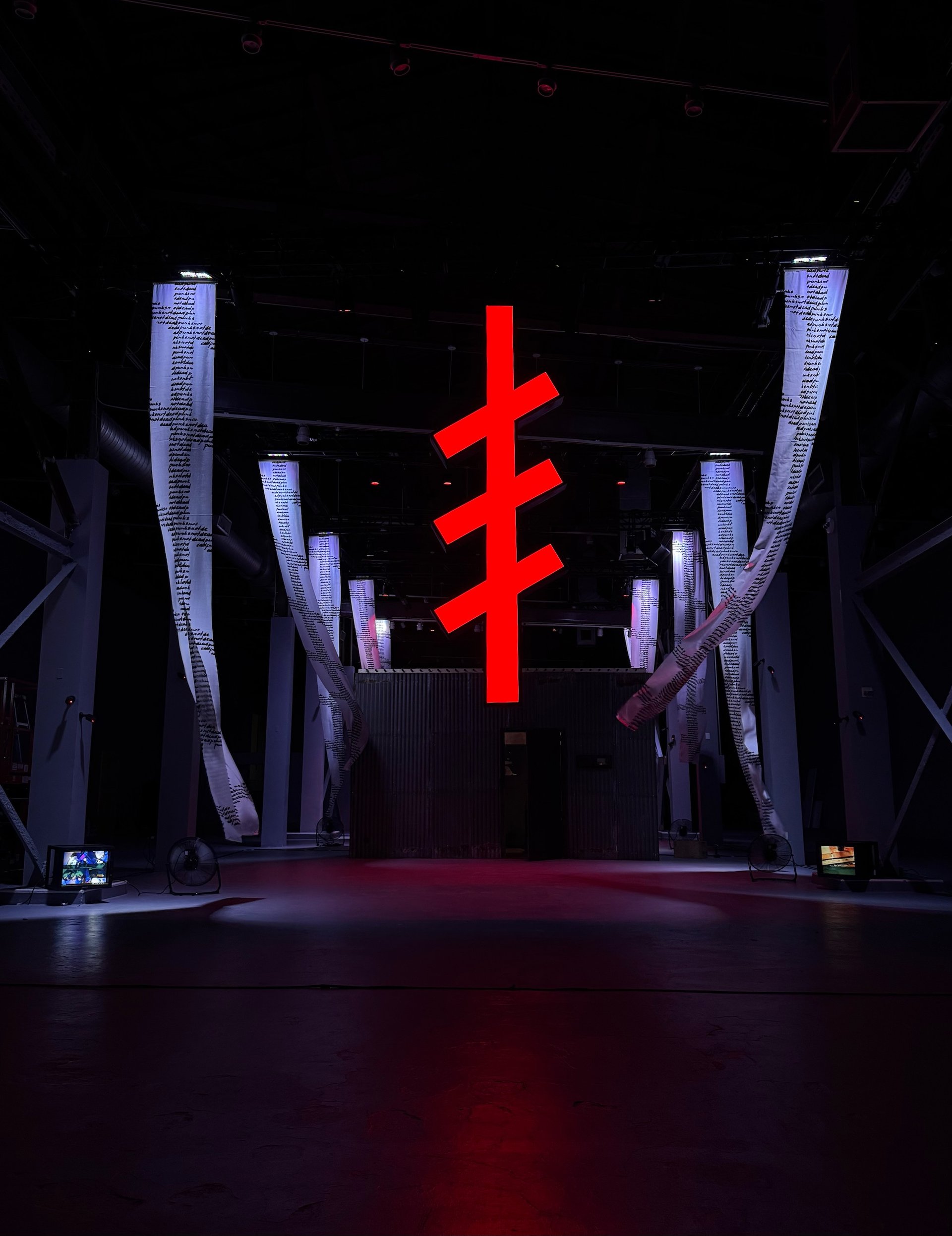From the time she entered her jail cell Thursday morning (5 June), it solely took Nadya Tolokonnikova, a co-founder of Pussy Riot, about quarter-hour to start out screaming. It was a high-pitched guttural shriek—the sound of a wounded animal or, contemplating her specific historical past, a political prisoner who refuses to be silenced.
Quickly after got here the staccato buzzing of a police scanner and the delicate cadences of a Russian lullaby, emanating from the identical house: a mock jail cell on the Museum of Modern Artwork (Moca) in Los Angeles, the place Tolokonnikova is endeavor what she calls, with a nod to her mentor Marina Abramović, her first durational efficiency, Police State.
Nadya Tolokonnikova, POLICE STATE, 2025. Efficiency documentation from The Geffen Modern on the Museum of Modern Artwork, Los Angeles Photograph © Jori Finkel
For the efficiency, which runs throughout museum hours till 15 June, the outstanding activist-artist is making a “soundscape” by layering music that she performs dwell with noise sampled from precise prisons and different tracks. She has to this finish geared up her jail cell—the guts of a darkish, moody set up on the museum’s Geffen location—with a pink toy piano, a synthesizer and laptop computer. She plans to launch all of it, round 80 hours price of sound, as a single piece of very experimental music.
Other than the musical devices, the Police State cell resembles the Russian prisons the place Tolokonnikova spent almost two years, after being sentenced in 2012 together with two different Pussy Riot members for staging an anti-Putin guerilla protest in Moscow’s largest Orthodox Christian church. The museum cell has a metallic bunk, a small bathroom, and, paying homage to her lengthy days in a gulag making army uniforms, a small stitching machine.

Nadya Tolokonnikova, POLICE STATE, 2025. Efficiency documentation from The Geffen Modern on the Museum of Modern Artwork, Los Angeles Picture by Yulia Shur, courtesy of Moca
To see inside, some guests kneeled on the ground to look at an old-school tv with a four-channel surveillance feed. A number of church pews close by provided barely extra comfy (additionally ritualistic) viewing of the scene at massive. (The altarpiece, if you’ll, is a tall crimson neon sculpture that includes an icon of her personal design—half Russian Orthodox cross, half jagged scar—that figures prominently in her current work.)
Different guests pressed near the metal cage of the jail cell, the place massive slits enable glimpses of Tolokonnikova, carrying an Adidas monitor go well with in the identical forest inexperienced as certainly one of her former jail uniforms. Above her desk cling drawings that she commissioned from present Russian political prisoners. Guests may also spot some graffiti, like a line scratched into the wall that claims: “I didn’t survive to be well mannered.”

Nadya Tolokonnikova, POLICE STATE, 2025. Efficiency documentation from The Geffen Modern on the Museum of Modern Artwork, Los Angeles Photograph © Jori Finkel
Within the run-up to the efficiency, Tolokonnikova described Police State as a panopticon designed to name consideration to fascist abuses of energy in Russia and past. However because the efficiency began, with so many guests whipping out cell telephones to take movies for his or her Instagram reels, it additionally felt like a touch upon the entice of superstar. A high-profile activist-artist performs music in a jail of her personal making and everybody tries to get a glimpse, as if she’s Taylor Swift. In both case, we’re all implicated, complicit in our hunger-games-loving surveillance society—a dynamic that will have been much more dramatic had she been capable of realise her thought (scrapped for legal responsibility causes) to construct a watchtower that guests may climb, actually placing them within the place of hyper-vigilant jail guards.

Nadya Tolokonnikova, POLICE STATE, 2025. Efficiency documentation from The Geffen Modern on the Museum of Modern Artwork, Los Angeles Photograph: Nadya Tolokonnikova
The opening-morning crowd included Moca curator Alex Sloane, who organised the undertaking; Riley Bray, a musician who collaborates with Tolokonnikova below the rubric Pussy Riot Siberia and Roger Gastman, the road artwork curator. However there was strikingly little overlap with the bold-face names who attended the Moca gala in the identical location final weekend.
In an Instagram put up this week, Tolokonnikova described who she hoped to succeed in. “My viewers?” she wrote. “College youngsters, graffiti writers, punk heads, those that misplaced their motherland to authoritarianism and are looking for a brand new residence and new hope; ladies who wish to scream at to the highest of her lungs; the forgotten, the excluded, the rejected, the heartbroken, the voided; those that dwell out and in of jails; those that need nothing greater than to cry; and those that haven’t any f-cks left to present.”
Nadya Tolokonnikova: Police State, till 14 June, The Geffen Modern at Moca, Los Angeles








